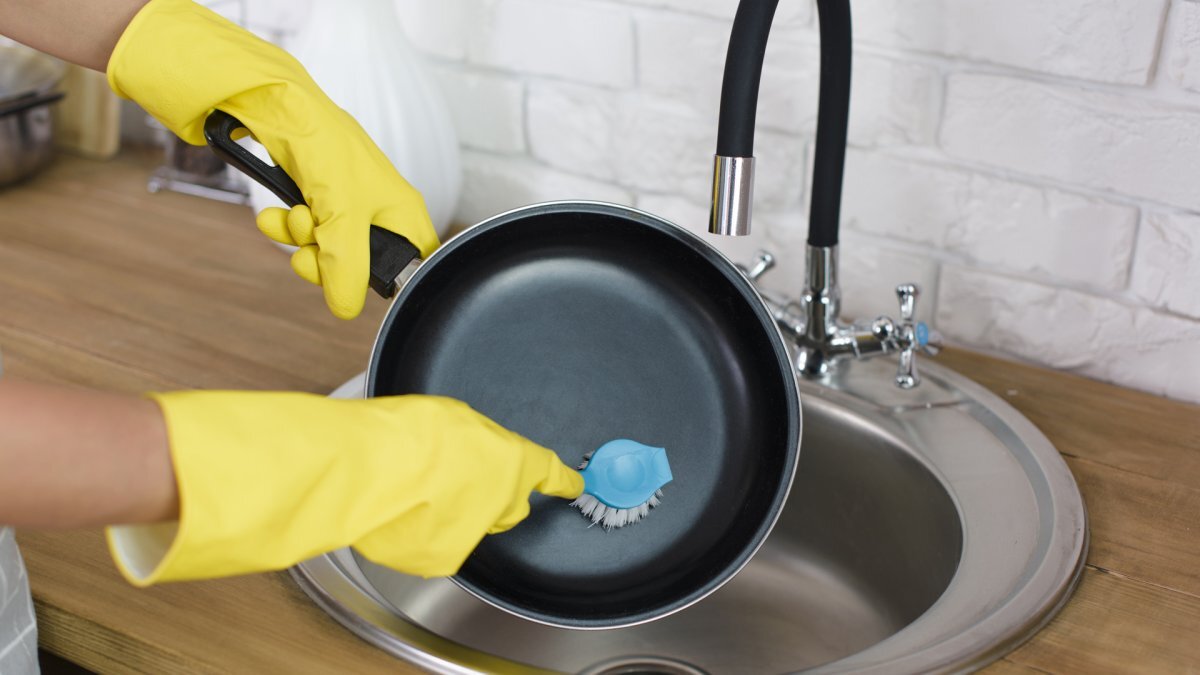This everyday gesture could be damaging your pans!

What if we told you that one of the most common post-cooking routines was quietly shortening the life of your pans?
At first glance, placing a hot pan under the tap seems harmless, even practical. But that sharp contrast between hot and cold could be wearing out, little by little, the tool with which you cook every day.
Although we often do it for convenience or to make food leftovers come off more easily, this daily action triggers an invisible but powerful reaction: thermal shock, an internal alteration that materials cannot always withstand without consequences.
A strong material... but not invincible
Stainless steel, forged aluminum, cast iron or even non-stick coatings have something essential in common: they are affected by abrupt thermal changes. When an extremely hot pan comes into contact with cold water, its outer surface cools almost immediately, while the metal core still retains a high temperature.
This sudden thermal gradient generates internal stresses in the material. If these stresses exceed its elastic threshold, deformation can become permanent: bases that warp, surfaces that lose their flatness or surface layers that begin to separate imperceptibly. Over time, these effects can accumulate until they affect the thermal behavior of the utensil with each use.
What happens behind that cold water jet
Contrary to what one might think, it is not only the coating that suffers. In many cases, it is the base metal that begins to show signs of structural fatigue. When the pan stops seating properly on the plate or starts to heat unevenly, the problem is not always in the fire: it may be within the material itself.
Non-stick coatings, on the other hand, do not usually crack directly due to the temperature difference, but they can deteriorate when the metal substrate deforms. As there are differences in thermal expansion between the base and the coating, stresses are generated that affect the adhesion between layers. In the medium term, this reduces the effectiveness of the non-stick coating, compromises hygiene and makes cleaning difficult.
In fragile materials such as cast iron or certain ceramic alloys, the risk can go beyond simple deformation: a sufficiently intense thermal shock can cause internal cracks or even breakage, especially if the utensil already has previous micro-cracks.
A question of habits... and physics...
Professionals who work with materials are clear: sudden cooling is not neutral. As Professor George F. Vander Voort, metallurgy expert and member of ASTM International, explains, "intense thermal gradients can induce stresses above the elastic limit, leading to localized plastic deformation and, sometimes, component failure" (Journal of Materials Engineering and Performance, ASM International).
The good news is that avoiding this damage is easy. Simply let the pan rest for a few minutes after cooking, allowing it to gradually lose temperature before coming into contact with water. This simple habit helps maintain the structure of the material, prolongs the life of the non-stick coating and improves thermal efficiency in future uses.
More than a frying pan
To think of a frying pan only as a vessel for heating food is to overlook its true role: it is a precision tool, designed to withstand thermal cycling and distribute heat evenly. Taking care of it doesn't require major sacrifices, just a little understanding of how materials behave over time and daily use.
Waiting a few minutes before washing it may seem insignificant, but in reality it is a silent and effective way to extend its useful life. In that small gesture, more than just the next recipe is cooked: it cultivates the relationship between technical knowledge and everyday gestures that make our kitchen a more conscious and durable space.
You may be interested in:
 Patricia González
Patricia González

Comments